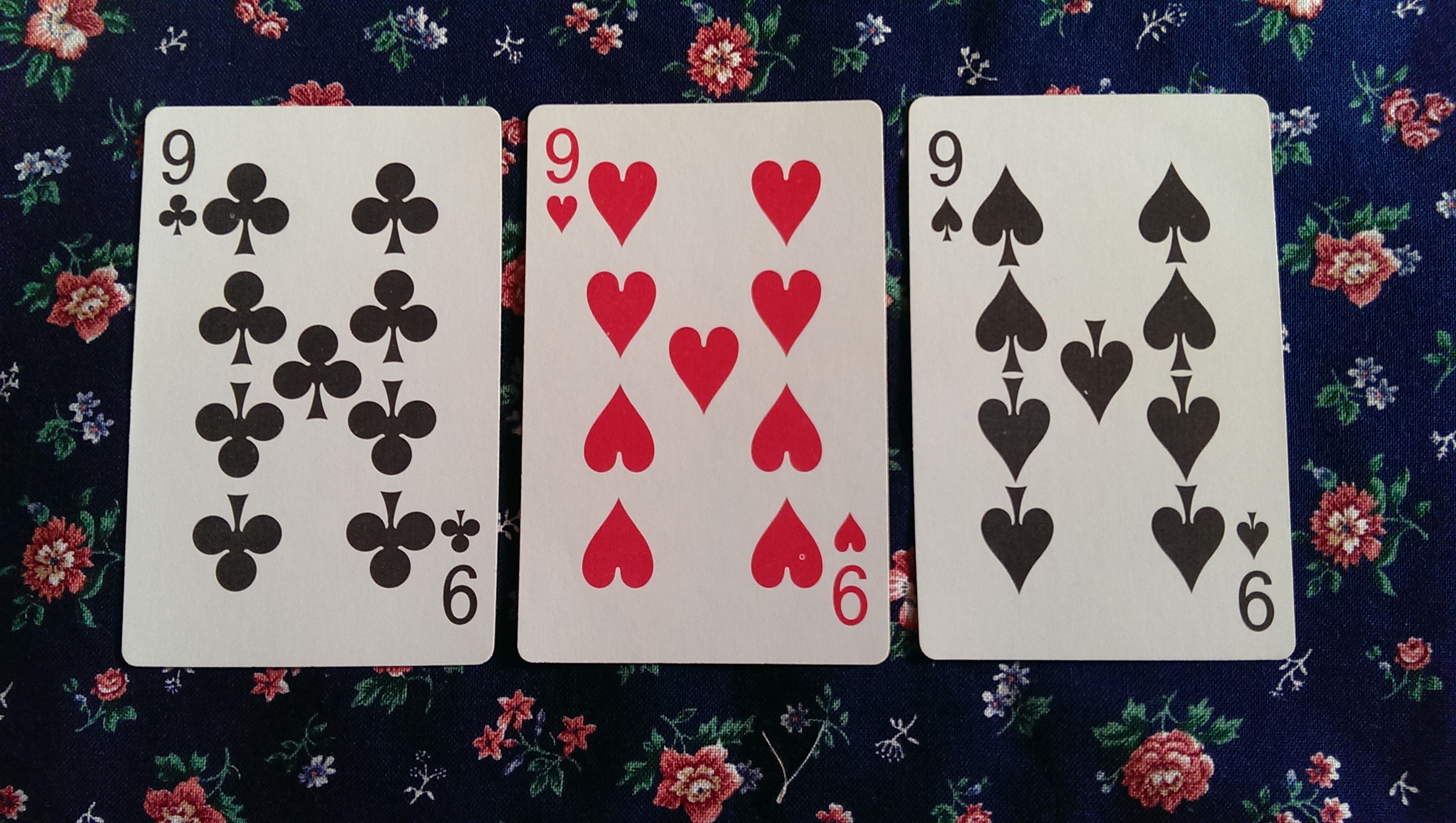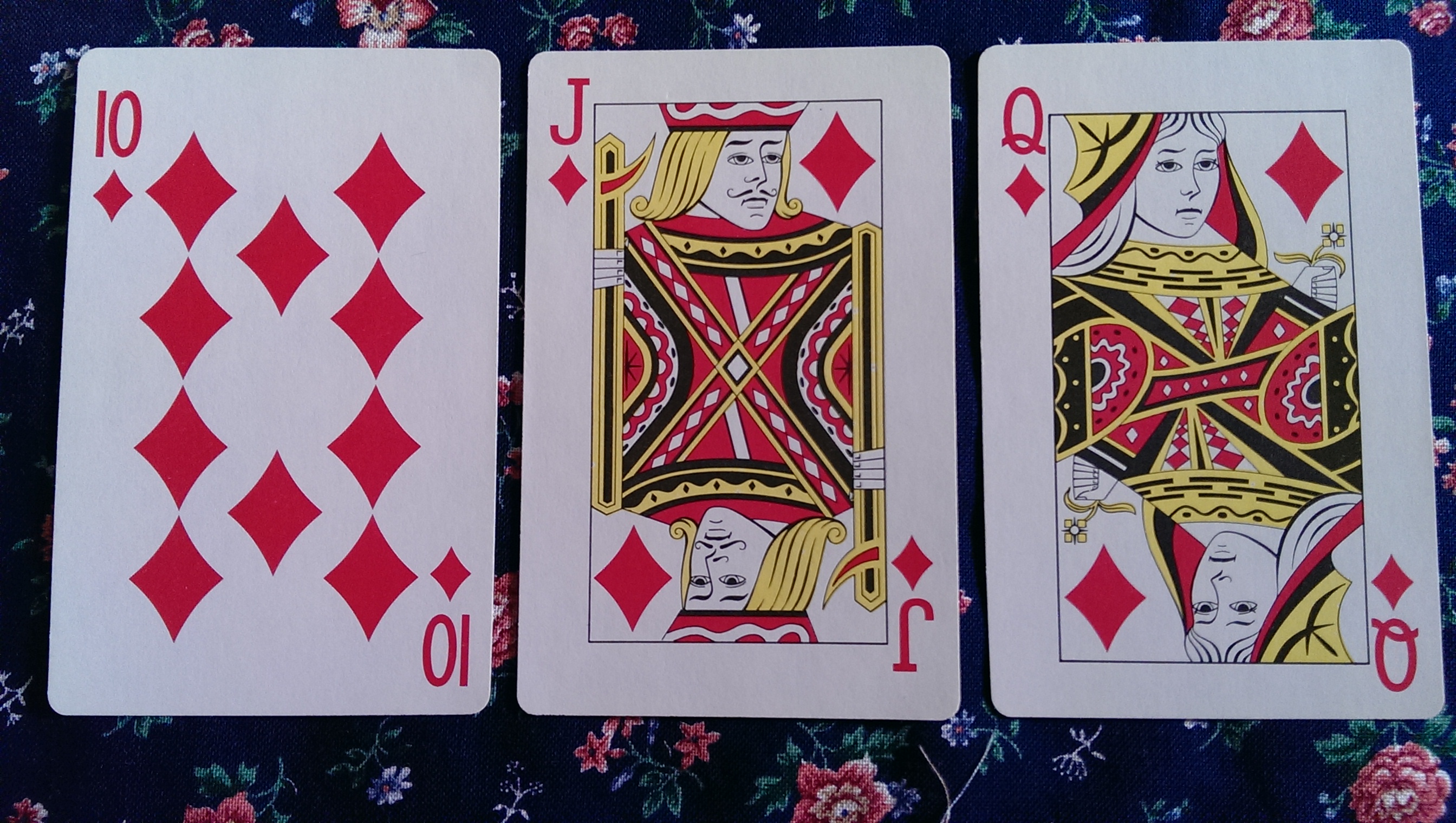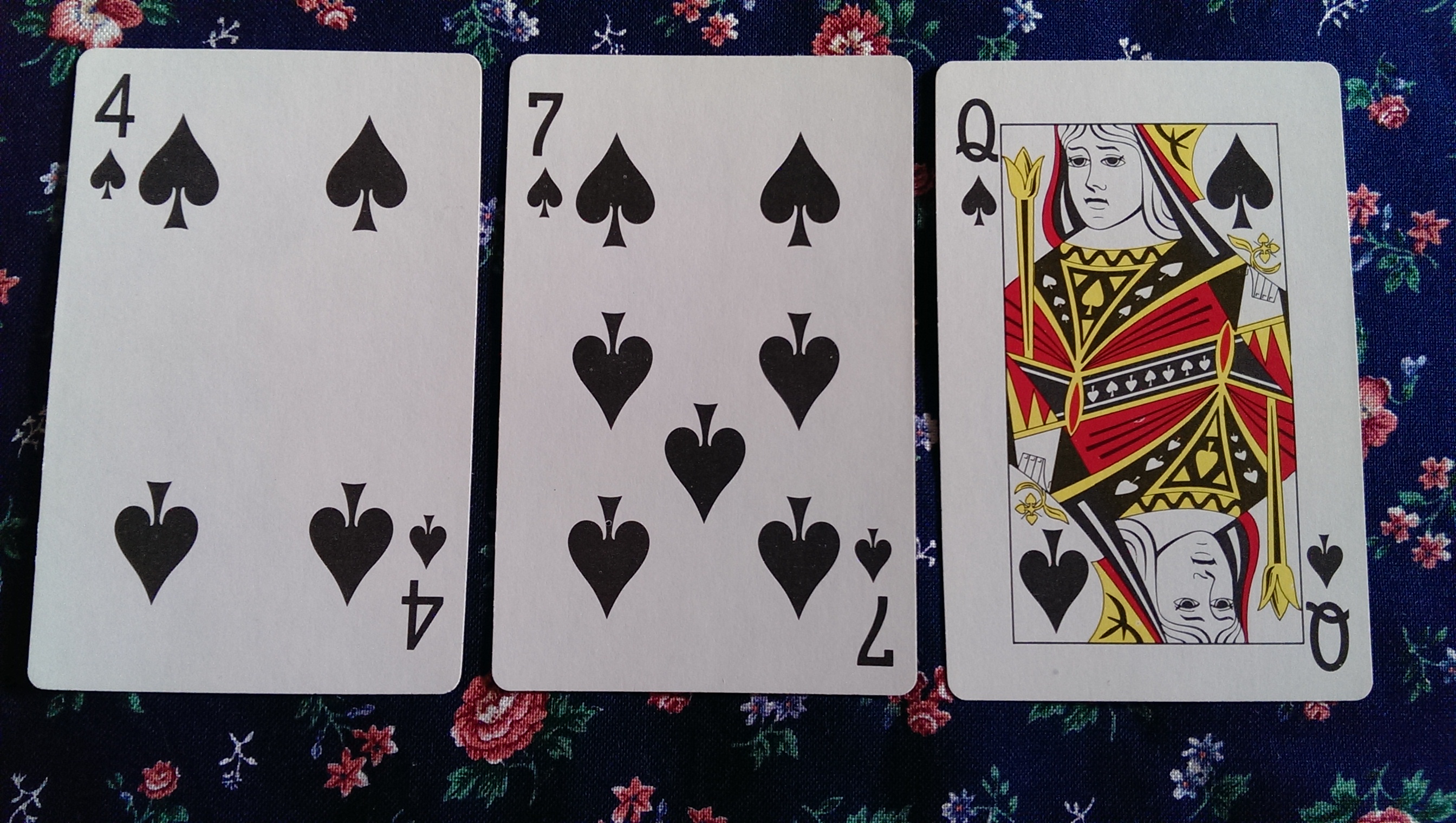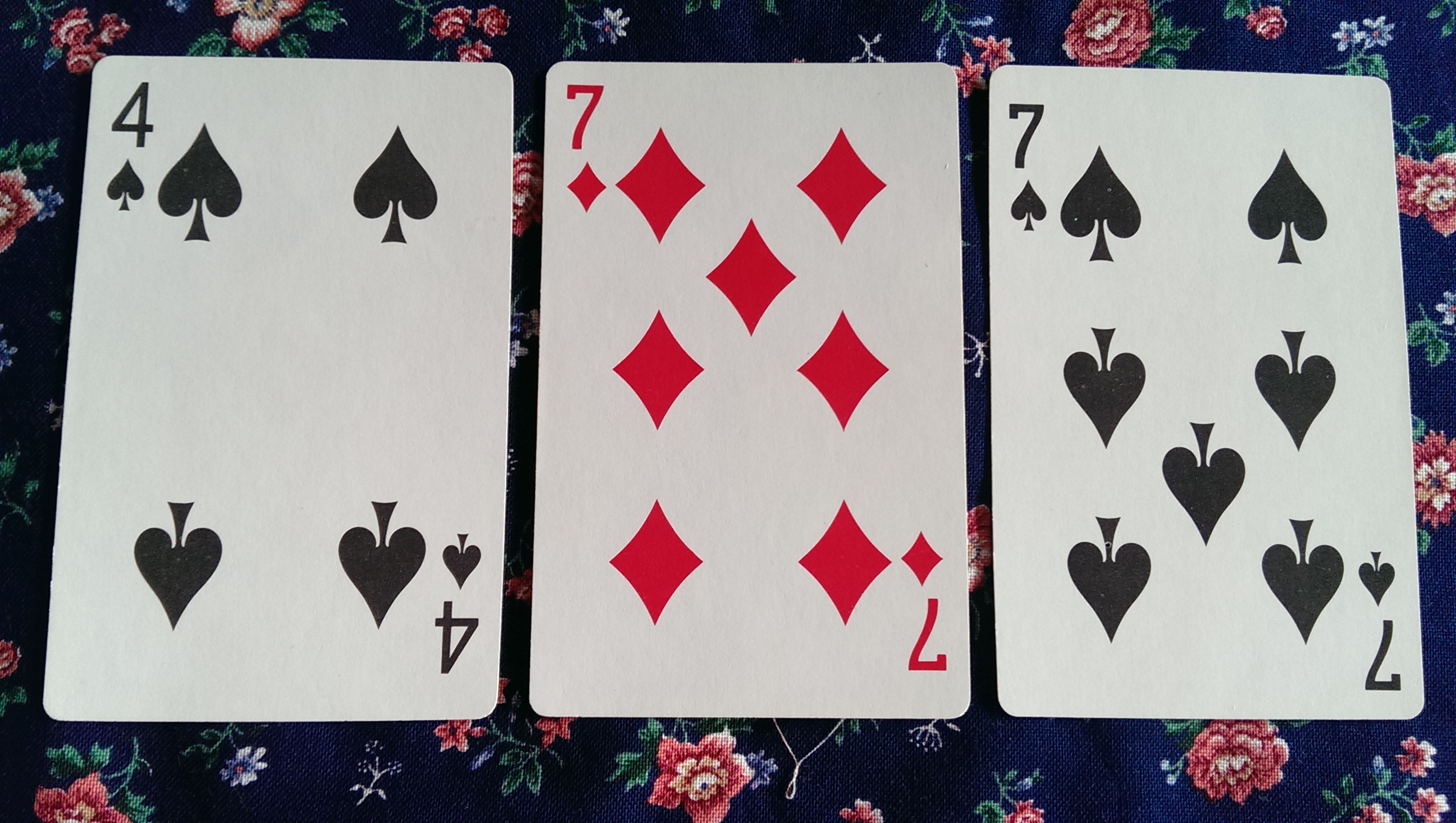Brag is a gambling game from Britain that was also played in British colonies. It's part of the Poch family of gambling games. Edmond Hoyle wrote a treatise on the game in 1751. Brag is one of the ancestors of Poker and was popular in America for a long time before the game of Poker developed. Later, Poker replaced Brag in popularity (Parlett, The Penguin Book 556-577).
When I discuss Poker, I mention that if you don't like gambling or don't want to bother with the betting, you can forget the gambling and just focus on the winner of the hand. It's harder to do that with Brag because a player's ability or willingness to match the required bet to stay in the game is important. As you play, you want some players to leave the round of the game. In order to make it a non-gambling game, you would have to avoid that element of players leaving and just head for a showdown among all the players. It would be a much shorter game and probably not as exciting, but still possible if you just want to see how the hands work. It would also make two player games possible. Using the official rules, you really want three or more.
Brag
The rules come from The Penguin Book of Card Games by David Parlett, pp. 577-579, with further information from The Way to Play by the Diagram Group, pp. 234-235. Although Brag can be played with a hand of five, seven, or even nine cards, the version that I describe here uses the traditional three-card hand.
Players: 3 to 7
Object: To get a hand of cards with a higher rank than the other players' hands (see the Order of Hands below) and win the kitty (collected bets).
The Deck: An ordinary 52 card deck (no jokers).
Other Equipment: Poker chips (or other suitable markers for the betting).
Wild Cards: Wild cards (called "floaters," older terms are "turners" and "braggers") aren't used in Brag as often as in Poker, but they are an option. If you haven't played with wild cards before, they are cards that can be counted as themselves or any value of card you wish, as if they were blank. You can use Deuces (Twos) or Jokers (normally left out of Brag) as wild cards, but be sure to agree with your fellow players on whether or not you're using them before the game begins. If you use wild cards, hands without wild cards or with less wild cards rank higher in case of a tie.
The Deal: Before beginning to play, the players can decide how many deals they want to play. Each player should deal an equal number of times before the game ends. If less than five people are playing, it is a good idea to have each player ante a chip in the kitty (the collection of chips in the center of the table that the players are competing for) before the deal. The players may also want to agree on whether there's a limit on the amount of each bet that the players can make.
The dealer shuffles the cards before dealing, but there is no shuffling after that first deal unless someone wins a hand with a Prial. Otherwise, players just keep dealing from the deck as it is. Going around the table, the dealer gives each player a card, face down, until each player has three.
The players look at their cards as soon as they receive them unless they want to Bet Blind (see below).
Playing: The eldest player is the first player (although you can use other ways of determining the first player). Each player, starting with the first one, has a choice of making a bet by adding more chips to the kitty or stacking (leaving this hand of the game and discarding his cards face down on the bottom of the deck).
Players are not allowed to "pass" in Brag like they do in Poker. If they do not bet, they have to leave the hand (Diagram 234).
Betting: The first player to make a bet may put in any amount for the opening bet as long as he doesn't exceed any limits the players placed on betting at the beginning of the game. The other players in turn have to at least match the opening bet or the last bet made, although they can raise the amount of the bet if they wish. If a player raises the amount of the bet, the next player has to bet at least as much as the new amount in order to stay in the hand. (Ex. If a player bets 5, the next player also has to bet at least 5. If that player decides to bet 10 instead of 5, he raises the minimum amount that the next player must bet to 10).
Note: Remember that you only have a limited amount of chips or markers to play with, and they will have to last you for the number of deals or hands that you agreed on in the beginning, so try to be a little conservative in your betting (this is one of the reasons why players might want to establish a limit on bets at the beginning). If the amount of the bet gets to be more than you are willing to risk for the type of hand that you have, it's time to stack and save your chips for the next deal. Don't waste too many chips on a weak hand. You could try to bluff the other players with your weak hand, but if it comes to a showdown, you could lose. Be aware of how many chips you have and how many your opponents have, and keep in mind how much you're willing to risk.
If players can't match the amount of the bet or don't want to, they have to stack. Betting continues around the table with players either matching the bet, raising it, or dropping out, until there are only two players left (no matter how many rounds of betting it takes).
When there are only two players left, they continue to bet until one of two things happen:
- One player stacks, allowing the other player to win the kitty without having to show anyone his hand.
- One player sees (bets twice as much as the minimum amount he needs to stay in the round), forcing the other player into a showdown.
The Showdown: The two players show each other their hands. The player with the highest-ranking hand (see Order of Hands below) wins the kitty. If they are completely tied for the highest-ranking hand, the player who didn't see receives the kitty.
Betting Blind: When a player first receives his cards after the deal, he has the option to leave them face down in front of him and bet blind (bet without knowing what cards he has). The advantage of doing so is that a player betting blind only needs to bet half the amount bet by the player before him in order to stay in the round, and if he raises, the other players that follow him will have to pay twice as much of the amount he raised in addition to the minimum amount to stay in the game.
Once a player starts betting blind, he can continue it for as much of the round as he likes, even up to the end, although he can stop and look at his cards earlier if he wants. If a player betting blind becomes one of the last two players in the game, the other player can stack but he can't see unless the player betting blind looks at his cards first. Parlett says there's a saying associated with this rule: "You can't see a blind man." (Ha, ha.)
Winning: As with other gambling games, you want to win as many of the chips or markers as possible. If you're not playing for real money, the player with the highest amount of chips at the end wins. If anyone runs out of chips completely, they are out of the game because they can no longer bet.
Covering the Kitty: If someone runs out of chips but still wants to stay in the game until the round is over, he can choose to cover the kitty. He lays his hand face down on the table. The other players put the old kitty aside and start making a new kitty as they continue to play without the player who is covering. Eventually, one of the other players will win the new kitty. After the winning player receives the new kitty, the winning player and the covering player both show their hands. Whichever of them has the higher-ranking hand wins the old kitty. Covering the kitty allows a player who had been losing one last chance to restore his chips, if he has a good hand.
Order of Hands
Card Ranking: The highest-ranking card in Brag is the Ace, followed by King, Queen, Jack, and the number cards from 10 to 2.
Combination Ranking: The possible combinations of cards and their rankings are somewhat similar to those used in Poker, but not quite the same because they're based on combinations of three cards. Higher ranking-combinations beat lower-ranking combinations. If two players have the same type of combination, use the ranking of the cards to determine which one is the winner. There may still be times when the players will be completely tied for the highest ranking hand. From highest to lowest, the possible combinations are:

Prial: A Prial is the same as Three of a Kind in Poker: three cards with the same numerical value. Although Aces are the highest-ranking of all the cards, if there is a tie between players with Prials, a Prial of Threes will beat a Prial of Aces. Aside from that, the Prials will follow the usual ranking, with Aces beating everything else, and all the other cards ranking in their usual order.

Running Flush: Three cards in consecutive order and all in the same suit. If there is a tie, the highest-ranking card in each Running Flush determines the winner (Ex. Someone with a Running Flush of Q-J-10 will beat someone with a J-10-9.)

Run: Three cards in consecutive order but of different suits. Although Aces are the highest ranking cards, the highest-ranking Run is 3-2-A (where Ace counts as 1). The next highest is A-K-Q, and the others in their usual numerical order.

Flush: Three cards of the same suit, not in consecutive order. If two players have a Flush, the winner is the one with the highest-ranking card in his hand. (Ex. If one player has a flush with the K-7-2 of Diamonds and the other has the 10-8-3 of Hearts, the one with the King in his hand wins.) If they tie for highest-ranking card, the highest-ranking card in their hands that doesn't tie wins. (Ex. If one player has K-7-2 of Diamonds and the other has K-10-3 of Hearts, the player with the Ten wins.)

Pair: Two cards with the same value and a third which doesn't match, the three cards having different suits. If both players have a Pair, the Pair with the highest ranking wins. If the value of the Pairs matches, the value of the third card determines the winner. (Ex. If the two players each have a Pair of Aces and one also has a Jack and one has a 10 as his next highest card, the player with the Jack is the winner.)

High Card: When neither of the players' cards form any of the above combinations, the winnning hand is the one with the highest ranking card in it (Diagram Group 234). (Ex. If one player has 5-10-J, and the other player has 3-7-K, the player with the King would win. The hand in the example picture would beat either of those two hands because it has an Ace.)

